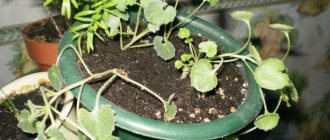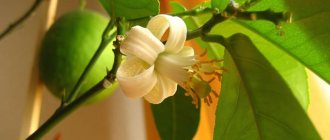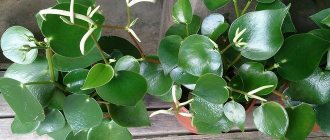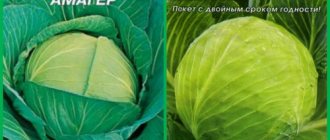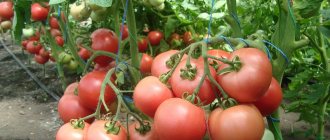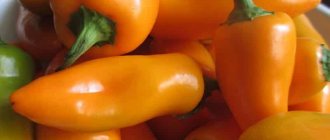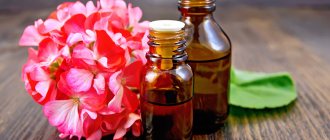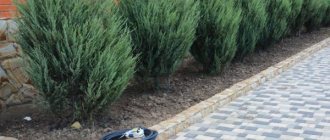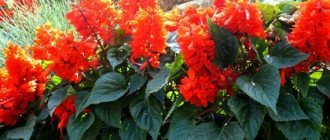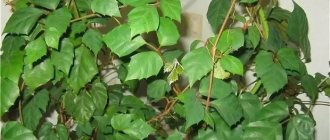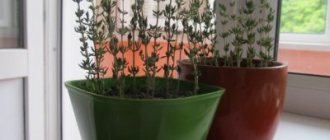Aechmea - this beautiful indoor plant has gained particular popularity in recent years. This fact is explained by the fact that the external appearance of the culture surprisingly combines the aggressively bright, catchy color of the flowers and the deep exotic shade of the widely spread leaf blades. Moreover, echmea is not particularly whimsical: the plant very quickly adapts to changing environmental conditions, and even a novice gardener can cope with its cultivation.
Rules for caring for echmea at home
Aechmea is not a capricious flower. It does not require much effort or time from the grower. There is an opinion that this exotic plant is suitable even for beginners and lazy gardeners. Create a favorable environment for it and you will admire its thick, spreading foliage and abundant flowering at the right time.
Lighting and location
Aechmea loves bright light, but it should be protected from direct sunlight at midday. She needs morning and evening sun every day. Different types of plants are suitable for different amounts of light.
Aechmeas with hard or stringy leaves need more intense lighting; their pot should be placed on a southern windowsill, but it is still advisable to cover the leaves from the sun with a light curtain or blinds at midday. In the warm season, such specimens can be taken out into the fresh air - onto the balcony, veranda.
Species and varieties with soft leaves do better in light partial shade. A suitable place for the pot would be window sills facing east or west or shelves near them, where the lighting would be moderate.
Northern windows are not suitable for growing a tropical beauty, but if you have only these in your apartment, you will have to make up for the lack of lighting with the help of a phytolamp or other artificial lighting lamps. Lack of lighting will affect the decorativeness of the foliage - it will become faded and less expressive. Variegated varieties will become monochromatic.
Temperature
Aechmea is a heat-loving plant. It adapts well to normal room temperature. In spring and summer, temperatures can fluctuate widely - from 21 to 28 degrees. and higher. She is not afraid of daily temperature changes in the range of 5 degrees. On the contrary, they stimulate the flowering of echmea. If the flower is indoors in the summer, do not forget to ventilate the room - the plant needs clean air. It will be good if you take the flower pot out onto the balcony or into the garden. Just try to choose a place where it will not be damaged by wind or precipitation.
In winter, the echmea goes into rest, so gradually reduce the temperature and maintain from 17 to 20 degrees. Such cool conditions contribute to the laying of powerful flower stalks for next year. Temperature below 16 degrees. is considered destructive for echmea.
How to water echmea
Aechmea, like all plants of a humid equatorial climate, loves moisture very much. During the warm season, the soil should always be slightly moist. To do this, water the plant frequently and abundantly with soft (filtered, rain, boiled or standing for 24 hours) and slightly warm water. Usually this is 2-3 times a week. When the air temperature drops, watering should be done less frequently, once a week. Excess water from the pan should be removed 15-30 minutes after watering.
Watering echmea during the growing season is somewhat different from watering other flowers. First, carefully pour water into the funnel-shaped rosette of the flower, and only then moisten the soil. In the spring and summer, until the flower shoot appears, there should always be a little water in the rosette, which is drained once every two weeks, holding the bush with your hands, or gently blotted with a napkin. Then, allow the leaves to dry thoroughly and pour in a fresh portion of warm, soft (boiled) water.
After the peduncle appears, water is not poured into the rosette; the remaining water is removed so as not to cause rotting of the flower arrow. Moreover, during rest, when the ambient temperature drops below 21 degrees, the outlet must be dry. And watering the soil in the pot should be reduced both in frequency and volume.
Humidity
Echmea usually adapts to the humidity of ordinary city apartments, but it prefers when the air humidity in the room is quite high, more than 60%. This is especially important during the heating season and on hot summer days. You will have to make sure that your tropical guest feels comfortable these days. In the morning, spray the echmea with settled water at room temperature. Keep in mind that excess moisture from the leaves must evaporate. To do this, there should be enough open space around the flower pot, in which there would always be movement of fresh air.
To increase humidity, you can use a special tray with a grill. Water is poured into the bottom of this pan and a pot of echmea is placed on the grill. If there is no such tray, you can surround the pot with wet sphagnum moss.
This may be interesting: Violet or Saintpaulia - home care
If you have household humidifiers, turn them on when the humidity is too low. When there are no such devices, simply place wide containers of water around the flower pot for evaporation.
It is important to know that you should not wipe Aechmea leaves with a damp cloth or sponge, as some species are poisonous, for example, Striped Aechmea. Its juice can get on the skin of your hands and cause irritation. We recommend that you carry out transplanting and other manipulations with the plant wearing rubber gloves, and after doing so, wash your hands with soap.
If you know the type of your flower well and are sure that it is not toxic, then wipe its leaves with a damp sponge to remove dust once a week. Your Ekhmea will be only happy.
Possible problems
Despite the fact that echmea cannot be called a particularly demanding plant, when growing it you may encounter some problems, the most common of which are:
- dry and wrinkled leaves: if the leaves of the crop are wrinkled, increase watering, provide the plant with daily spraying with warm water (rain if possible). The main thing is not to “overfill”. Excess water can cause the socket to rot;
- leaf deformation: in case of leaf deformation and small green aphids appearing on them, it is necessary to spray the plant with insecticides or pollinate with pyrethrum.
- drying out of echmea occurs due to too low air temperature in the room. The situation can be corrected by moving the plant to a room with a higher temperature.
- Rot at the base of the rosette occurs due to excess moisture. To cope with this problem, it is necessary to drain the rosette of leaves and not water until the soil dries out;
- the appearance of green spots on the surface of leaf plates occurs due to mechanical damage. In this case, you must carefully handle the echmea and try to minimize contact with the leaves;
- Aechmea’s “refusal” to bloom is a signal of a lack of sunlight.
Top dressing
Aechmea should be fed regularly from spring to mid-autumn every two weeks. The best fertilizing option is fertilizer for Bromeliads in liquid form. If you don’t find any, feed them with complex fertilizers for flowering indoor plants, cutting the dosage in half.
When choosing fertilizers, pay attention to the composition - it should not contain elements such as copper and boron, since they are toxic to echmea.
Apply the solution prepared for fertilizing to the soil not immediately, but some time after the next watering. We remind you that echmea absorbs moisture and nutrients well through its leaves, so add one part of the nutrient solution directly to the outlet, the second part to the ground, and the third to a container for spraying leaves for foliar feeding.
Do not feed the flower for a month after transplanting into new soil. With the onset of winter, during dormancy, reduce fertilizing to once every 45 days or stop completely. Please note that an overfed plant may become sick.
Bloom
How many years does echmea live?
Echmea usually lives from three to five years. At this time, it reaches adulthood and blooms, and after the only flowering in its life, it dies. The rosette never blooms again. However, during this time the flower manages to form quite a lot of children, which continue its lineage.
Flowering in different types of echmea occurs from late April to October. Some species bloom for several months. Even when a faded plant is already fading away, its bracts remain on the flower arrow for some time. You can extend the flowering time by carefully watering the plant, without getting water on its bracts. When the bract does dry out, it should be cut off almost to the base using a sharp, clean pruner. Remove water from the outlet, if there is any, so that the flower does not rot.
It is advisable not to destroy the daughter shoots that appear on the bush. Do not rush to throw away the wilted mother plant. It is capable of not only supporting the life of already born children, but also forming new lateral processes. But, if you don’t need it for propagation, you can plant the required amount and throw away the mother bush.
A flower grown from seeds will bloom only after four years, in the fifth, and daughter shoots bloom earlier, in the second or third year.
How to make aechmea bloom
If the echmea does not bloom in due time, try to provoke it to do so. Place the pot containing the stubborn flower in a large plastic bag. Place it there, next to the pot, to choose from: a couple of ripe apples or one orange or half a rotten apple. Tie the bag well. Leave it for a couple of weeks in partial shade and maintain the temperature around 22-23 degrees. The aromatic fruit will release ethylene gas, which will produce vibrant, long-lasting blooms over the next four months.
A similar effect is obtained when a piece of calcium carbide is placed in the center of a rosette containing water. When they interact, a gas, ethylene, also begins to be released, which will provoke the echmea to flower.
Aechmea dormant period
In winter, the echmea is supposed to rest. At this time, her future flower arrow is formed. To make it more powerful, gradually reduce the ambient temperature to 17-20 degrees. Also reduce watering and fertilizing. It’s still not a good idea to overdry the soil - make sure it remains slightly moist. Spraying should be continued, only carefully so that water does not get into the center of the funnel-shaped rosette and cause it to rot. Also make sure to keep the lighting bright and long. During the period from November to February, echmea can stand in a cool room on a sunny windowsill without shelter. Remember that it does not tolerate drafts and musty air equally well. When airing the room, move its pot away from the flow of cold air.
General information about culture
The plant we are considering can grow both on the soil and on other plants, that is, it can be an epiphyte. It is also the only plant in the entire family that has thorns on the edges of its leaf blades.
A rosette is formed from the leaf blades of this plant. The color of the foliage can be variegated or monochromatic. They may also feel different to the touch. By the way, this plant has a fruit with seeds that looks like a berry.
What distinguishes Aechmea from other plants in its family is that it grows well indoors. And even the fact that the plant blooms only once is popular among people who grow flowers.
It is worth noting that this plant is poisonous, but its poison is not dangerous to human life. The most that happens is that the skin becomes irritated and itchy. And to avoid this, they wear gloves and wash their hands well after working with the flower.
Aechmea varieties
- Striped : Aechmea striped, also called Billbergia striped. The leaf rosette of this variety is shaped like a tube and reaches about one hundred centimeters in diameter. The belt-shaped leaf plate reaches sixty centimeters in diameter and six in width. The leaf is divided into segments by marbled white stripes. The inflorescence reaches thirty centimeters in length and has pinkish leaves. The flowers themselves, included in the inflorescences, have a bluish tint; after some time they change their color to bluish-red.
- Curved echmea : This type of crop can grow both on the ground and on other plants. The foliage is linear and together form rosettes, and on one plant there can be up to twelve of them. The leaf plates themselves reach a length of fifty centimeters and a width of only fifteen millimeters. In the lower part they form a tube and along the entire length of the leaf edge there are spines that can reach two millimeters in length. The flowers, forming inflorescences twenty centimeters high, have red petals that reach a length of twenty-five millimeters. The bracts of this variety of crop also have a reddish tint. The flowering period of the variety begins in spring.
- Biseriata : Aechmea biseriata, also called Platyechmea biseriata, is a plant that can grow both on the ground and on other plants. Long (about one hundred centimeters), narrow (3 centimeters wide), pointed upward leaves form loose and rather widely spreading rosettes, which reach a diameter of about one hundred centimeters. On the edge of the leaf plates there are spines, between which there is a very small distance. The peduncle itself reaches a height of more than sixty centimeters. This variety of crop has purple flowers with bright red bracts.
How to transplant echmea at home
Aechmea transplantation is carried out in March. To prevent its rhizome from becoming affected by rot, we recommend replacing the soil in the pot annually, and periodically changing the pot itself.
Pot
The pot for the plant can be left the same or taken a little larger so that it is 2-3 cm wider than the root system of the flower. In echmea, the root grows more in width than in depth, so buy a pot that is wide enough, but not deep. A plastic pot is more suitable, since a tropical flower in such a pot will be warmer than in a ceramic one. Both the pot itself and the soil in it serve more to secure the flower in an upright position than to nourish the flower. A prerequisite for healthy growing of echmea is the presence of drainage holes in the bottom and a good drainage layer (1/3 of the volume of the pot).
This may be interesting: Bauhinia: growing an orchid tree at home
What kind of land is needed for replanting?
The soil for growing echmea must be fertile, airy and permeable. Ready-made soil can be purchased at flower shops for Bromeliads. Or you can prepare it yourself using one of the options below:
- Leaf soil - 2 hours, peat - 1 hour, coarse sand - 1 hour.
- Leaf soil, turf soil, peat and humus - 1 hour each, sand 0.5 hours.
- Crushed pine bark, coarse sand, crushed sphagnum moss, peat - all 1 tsp.
For greater looseness and prevention of fungal infection, we recommend adding perlite and crushed charcoal to any soil mixture.
Self-prepared substrate must be disinfected (steamed, fried or frozen) before use.
Transplantation process
Wear gloves when working.
- Remove the flower from the pot, lightly shake off the soil and inspect its roots.
- Cut off dry roots and rosettes with a clean tool. Treat the cuts with crushed charcoal or activated carbon. Let the wounds dry for a couple of hours in the open air.
- Now you can place the flower in a pot on a good layer of drainage and the same layer of soil. Spread the roots and cover them with fresh soil, without compacting them, but shaking them a little so that the substrate is evenly distributed in the pot.
- Place the pot with the transplanted plant for 2-3 days in a slightly shaded, warm place to adapt the root system. Do not water during this time. If you are worried that the soil is dry, spray the leaves with a fine spray bottle with warm water. Aechmea is an epiphytic plant; it perfectly absorbs nutrition and moisture with its leaves.
During transplantation, you can transplant the Aechmea children to obtain new young specimens. We will talk about this in more detail below.
Types of Aechmea domestica with photos and names
More than 250 species of Aechmea are known to be found in the wild. Some of them are cultivated at home.
Striped Aechmea (Aechmea Fasciata)
Dark green leaves with a marbled pattern and finely toothed edges form a tall funnel. The leaf plate is dense, belt-shaped (length up to 0.6 m). The capitate or pyramidal straight peduncle grows up to 30 cm. The bluish-red small flowers are surrounded by pink glossy bracts.
Aechmea Weilbachii
Ensiform wide leaves, copper-red in color and linear in shape, form a symmetrical rosette. The leaves are without spines, their length reaches 50 cm. The racemose inflorescence is located on a red peduncle. Large scarlet bracts are collected at the base, between them there are small flowers with blue-purple petals.
Aechmea recurvata
Light green narrow leaves, linear in shape and spiny edges, form a wide funnel. Leaf width - up to 1.5 cm, length - up to 40 cm. The inflorescence is capitate, about 0.2 m high. Pink flowers are surrounded by triangular red bracts.
Aechmea is a plant that arouses interest with its variegated green leaves and eye-catching flowers. It blooms once in a lifetime, but the flowers are so magnificent and unusual that they amaze the imagination of connoisseurs of beauty. Caring for the plant is not difficult. Therefore, the number of fans of echmea is steadily growing.
Reproduction of echmea
You can propagate this flower at home using seeds or by rooting its children. We'll tell you how to do this one by one.
Propagation by seeds
Aechmea seeds are extracted from ripe berries
This method is more labor-intensive and not popular, since echmea bushes grown from seeds bloom only in the fourth or fifth year of life and may lose the varietal flavor of the mother plant. If you still choose this method, we’ll tell you more about it.
We recommend sowing seeds in April. To sow seeds, prepare shallow containers with a lid or other containers suitable for creating a greenhouse effect. As a substrate, use a loose mixture of peat and sand or crushed rhizomes of ferns. The substrate must be sterile.
- Spread the seeds evenly over the surface of the substrate at a short distance from each other and sprinkle a little soil on top.
- Gently moisten the surface with warm, settled water using a fine spray bottle. Close the container lid.
- Find a warm place for your greenhouse with bright but diffuse lighting and a temperature of about 25 degrees.
- If condensation forms on the walls and lid of the container, it should be removed and the greenhouse should be ventilated.
- If necessary, moisten the soil; it should not dry out.
- Low humidity and direct sunlight are contraindicated during germination of echmea seeds.
If the above conditions are met, not even a month will pass before you see the first shoots. Continue to grow them in partial shade and high humidity. After 2-3 months, the young seedlings will be ready to be planted in separate small pots. By this time they should have formed a pair of true leaves. Prepare the soil for Bromeliads. Care for them more carefully than for adult echmeas (warmth, absence of drafts and direct sunlight, high humidity, regular watering and spraying). In the spring, these young plants will need to be replanted again in pots of suitable size.
Separation of side shoots or children
This method is the most effective and is used more often in home propagation. As the echmea grows, right up to its flowering in the 3-5th year, the mother plant develops lateral shoots - children. Those that reach a third or half of the mother plant in height usually acquire their own roots. So they can be separated and planted in separate pots. If you accidentally separate a baby without roots, it will not take root.
The separation of children should be carried out in early spring, in March.
- To begin, carefully remove the flower from the pot.
- Separate the daughter shoots with roots with a sharp, clean knife.
- Treat the cut areas on the baby and mother bush with crushed charcoal or activated carbon.
- Plant according to all the rules that we wrote about above, in small pots (up to 9 cm in diameter).
- We recommend covering weak specimens with a transparent film (giving them greenhouse conditions) so that they take root faster. Then the placed children will quickly adapt to the new pots and will not cause you any problems. They will bloom for 2-3 years, depending on the species.
If you are interested in a large number of children, do not rush to throw away the mother plant when it withers. This is surprising, but even in such a pitiful form it is capable of producing lateral shoots more than once. Just periodically moisten the soil in the pot and plant its babies as they appear.
Features of seasonal care
Important details:
- spring and summer. Good watering, fertilizing every month, enough light and heat (from +22 to +26 degrees), the flower grows well on the balcony or open terrace. If necessary, the overgrown bush is replanted in the spring. In the spring, at the end of the flowering period, be sure to remove rosettes with wilted buds. It is important to carry out propagation in time with the help of young rosettes of leaves: gradually the parent specimen fades, and new flowers will delight the eye if the florist takes care of the continuation of the genus of tropical flowers in a timely manner;
- autumn and winter. Closer to the onset of cold weather, watering is carried out less frequently; the echmea is transferred to a room where the temperature is kept at a level of +15 to + 17 degrees. Lower rates are detrimental to the tropical species. In winter, liquid fertilizers are not applied to bromeliads.
Aechmea diseases and insect pests
Echmea has good immunity and rarely gets sick. However, if there are serious violations of the conditions of its detention, anything can happen. Therefore, we recommend that you regularly inspect your beauty. This way you will not miss the onset of a serious illness and begin its treatment on time.
This may be interesting: Why Eucharis does not bloom and other problems with growing Amazon Lilies
| Diseases and pests | Symptoms | Control measures | Prevention |
| Leaf spot | The leaf surface is covered with small round blisters, which are sometimes filled with liquid. After some time, dark brown stripes and fungal spores appear in place of the blisters. | Treat the echmea with some suitable fungicide (for example, foundationazole), according to the instructions for use. It is better to destroy a severely affected plant. | Do not exceed permissible humidity. Ventilate the room regularly. Do not place the pot in a dark place - good lighting is the key to good health of the echmea. |
| Fusarium | The roots and leaves at the base of the rosette begin to rot. An neglected form will lead to the death of the plant. | It cannot be treated. The affected plant will have to be destroyed. | Monitor temperature indicators and follow watering rules. Before planting, disinfect the prepared soil. |
| Root rot | If the soil is too wet, the leaves turn yellow and fall off. | Remove the plant from the pot and rinse the roots with room temperature water. Remove rotten and damaged parts. Treat the cuts with crushed charcoal or activated carbon. Plant the bush in new soil and water it with a solution of the drug Carbendazim. | Follow the timing and norms of watering. The lower the temperature, the less frequent and sparing the watering should be. |
| Shchitovka | Brownish-gray plaques of adults are visible on the surface of the leaves. The leaves turn yellow and dry out. Aechmea slows growth. | Adult insects are removed with a cotton swab dipped in soap or alcohol. Spraying the bush with an insecticide (actellik, karbofos or confidor) according to the instructions. | Spraying with a soap-tobacco solution will sharply reduce the appearance of young larvae. |
| Root mealybug | This parasite attacks the root of Aechmea. Whitish lumps appear at the roots, similar to cotton wool pellets. The plant slows down. The leaves turn pale, wrinkle and dry out. | Treat the plant with insecticides (confidor or actara) according to the instructions, not only the leaves, but also the soil. | Disinfect the soil before use. When replanting, carefully inspect the root system of the flower and remove damaged areas. Every spring and autumn, water the soil in the pot with Aechmea once with Aktara solution. |
| Mealybug | Mealy lumps appear on the leaves. The leaves become faded, especially variegated ones, and the plant stops growing. | First, rinse off the insects in the bathroom with warm water from the shower. Then spray with Karbofos solution. | |
| Aphid | This pest settles on young leaves of Aechmea and feeds on the sap of the plant. Large colonies of aphids can quickly destroy a plant. | Rinse off the aphids in the bathroom with warm shower water. Then spray the crown with a solution of some insecticide (Fitoverm, Actellik, Karbofos). | Monitor the room temperature. If the temperature is too high, the aphids will multiply very quickly and will not be easy to deal with. |
| Spider mite | Cobwebs appear on the leaf blades, and then brown spots. The leaves dry out and fall off. | Treat all parts of the plant with Decis. | Appears in dry and hot rooms. For prevention, it is important to constantly moisten the soil and surrounding air. |
Planting and transplanting
What is needed for planting?
Since Aechmea has a shallow root system, give preference to a shallow but wide pot with drainage holes. In volume it should be slightly larger than the volume of the root system of the plant being planted. As for materials, give preference to plastic - it is not as cold as ceramics. And for echmea, which loves warmth, this is important. To give additional stability to a rather large plant, the pot with it can be installed in a beautiful flowerpot, which will also serve as a decorative element. In this case, you will need not to be lazy and remove water from the pots every time after watering.
For greater stability, a pot of echmea can be placed in a decorative flowerpot
The soil mixture can be purchased at a specialized flower store. Of course, we choose soil for bromeliads. The soil should have good air and water permeability and should also be highly loose. The best option would be a homemade mixture that includes:
- 1 part pine bark;
- 1 part chopped sphagnum;
- 1 part coarse sand;
- peat and horn shavings - to improve the structure.
To prevent the soil from becoming moldy, add pieces of charcoal to the substrate.
Another option would also work well:
- 1 part peat;
- 2 parts leaf soil;
- 1 part coarse sand.
Before planting, be sure to sterilize the soil mixture by dousing it with boiling water or frying it in the oven.
Substrate for bromeliads - an ideal choice for planting echmea
It is advisable to replant echmea annually - in the spring.
Step by step process
- Place a thick layer of drainage on the bottom of the pot. This is a prerequisite, since Aechmea does not like waterlogged soil.
- Fill the top of the drainage with a layer of soil equal to almost half the volume of the pot.
- Having collected the echmea leaves in a bunch at the very base, carefully remove the flower from the old pot.
- Place the flower in a new container and add the remaining soil.
- We transfer the pot to a slightly shaded place. To quickly adapt the roots of the echmea, we do not water it for 2-3 days.
After planting, the echmea is not watered for 3 days, giving the roots the opportunity to adapt
Other problems that arise when growing echmea
Wilting of leaf blades. Reason: lack of watering.
The leaves have turned brown. Reason: the plant is cold, the ambient temperature has dropped too much.
The leaf blades have become faded. Reason: lack or excess of lighting.
The tips of the leaves dry out. Reason: dry air, humidity dropped below normal.
Brown spots appeared on the leaves. Cause: It could be sunburn or a fungal infection.
The lower part of the leaves and roots rot. Reason: excessive watering in the summer or the presence of water in the outlet in the autumn-winter time, when it should be dry.
The inflorescence and peduncle dry out and acquire a dirty pink color. Reason: the flower is freezing, it should be moved to a warmer place.
The neck of the flower rotted in the summer. Reason: the water in the funnel had not been changed for a long time; it had become stagnant and rotten. The leaf rosette should be washed with clean water if a lot of dust and debris has accumulated in it. Every two weeks, empty the outlet of water, dry it, and then fill it with a fresh portion of water again.
The leaves began to turn yellow. Causes:
- unsuitable soil composition: it is heavy, poorly permeable to moisture or air;
- there is not enough nutrition, the flower has not been fed for a long time;
- insect pests.
Care errors and their elimination
In the table, gardeners will find a lot of useful information about the effects of negative factors and methods for eliminating them:
| Problem | Causes | Elimination |
| Leaves turn yellow and dry | The flower is in a hot, stuffy room. Sunlight falls on the leaves for a long time throughout the day. The air humidity in the room is very low. The earth dries out when the substrate is rarely moistened | Adjust plant care, eliminate factors that negatively affect the condition of the leaves |
| Rotting | Overwatering. Dampness and cold in the room: moisture almost does not evaporate after watering. Poor quality, dense soil with poor aeration. There are no drainage holes or the water drainage holes are clogged. There is no drainage layer; water often stagnates in the pan for a long time | Transfer the flower to a warm, bright room with normal air humidity. After watering, ensure that excess liquid drains through the drainage holes. |
| Leaves wither and wrinkle | The room is very hot. There is not enough moisture or watering is more than normal. Death of the root system | Water the flower according to the rules. Eliminate excessive dry air by spraying the plant with a fine-hole spray bottle in summer and on hot days. Check the condition of the roots |
| Doesn't grow | Insufficient feeding. Little light. The soil is of poor quality. Stagnation of liquid in the soil, against which the roots rot. The pot is too small: the roots and the entire plant do not have enough nutrients | Eliminate factors interfering with plant growth |
| A white coating appears at the base of the leaves | Excessive watering. Development of rot. Adding water to the central part of the outlet at the wrong time: autumn and winter, when the plant is in a cool room | Do not flood the flower. Do not moisten the leaves in the center of the rosette from autumn to spring |
| Leaves change color (become brownish-brown) | Lack of heat and sun. Fungal development | Move the tropical-looking pot to a warmer location. Normalize the lighting level. Treat the flower with fungicides to destroy rot, remove leaves affected by the fungus |
Benefits and superstitions
It is believed that echmea increases the vitality of people living with it in the same apartment. It gives them decisiveness in their actions. Its place should be in the office, near the desk. This tropical beauty helps not only to make reasonable plans, but also to bring them to life. Ekhmeya maintains a cheerful mood, gives people around a cheerful mood and confidence in the future.
However, we do not recommend placing a pot of this flower in the bedroom, because sensitive people near it sometimes suffer from insomnia. And it has no place in a nursery, since the beautiful but poisonous leaves of some types of echmea can be tasted by children or pets.
Is Aechmea poisonous or not?
Striped aechmea is considered to be a poisonous species of echmea. If you decide to grow this species at home or on a summer cottage, be careful. The juice of the plant's fruit contains toxic substances that can cause severe irritation of the skin. Avoid touching the crop without gloves, and also make sure that children and pets do not decide to taste the very attractive-looking fruits of the plant.
Aechmea is an excellent choice for both novice gardeners and experienced lovers of living plants. Each type of plant has a special appeal and amazes with a unique palette of inflorescences. Use echmea when creating elegant compositions for your interior or summer cottage, and your garden will sparkle with new colors.
Description
The homeland of the exotic flower is Central and South America
Aechmea is a perennial herbaceous plant from the Bromeliad family. This is an epiphyte, i.e. grows by attaching to old tree trunks and stumps. Rarely, you can also find terrestrial species growing among stone or rocky hills.
The stem of the plant is short - no more than 50 cm in height. In its family, Aechmea is distinguished by its leaves. They are elongated, wide, rigid and with needles along the edges. Some species have foliage with a soft, leathery texture. The green mass forms a kind of rosette with a funnel-shaped depression in the central part and, under natural conditions, can reach up to 2 m in diameter.
The color of the foliage mass can vary from green to gray-green, and there are also striped leaf blades.
Natural habitat
The plant has a poorly developed root system. Its main goal is to keep its upper part on the supporting object. Little is involved in nutritional work. This role is played by the leaves.
The inflorescences are varied in appearance: a spike, a head, a panicle. The color of the bracts is pink. They are shaped like pike tips. In their recesses there are flowers that come in red, blue, and purple colors.
The flowering period lasts several months. Pollination of the inflorescence will contribute to the ripening of the fruit. These are small juicy berries containing small oblong shaped grains inside.
The rosette can bloom only once, and then dies. In addition to the main rosette, during its growth, additional shoots are formed on the sides, which in 3-4 years will also be able to please with their flowering.
Flower requirements for lighting and temperature
In general, echmeas are not particularly demanding on lighting and can easily grow in partial shade. But, given that the striped variety is a variegated variety, it needs more light. An eastern window sill is more suitable for striped echmea. South windows will also work, but only if they are shaded. The sun's rays must be diffused, otherwise they will leave burns on the leaves.
Aechmea tolerates heat well and will be comfortable even at plus 26-28 °C in summer. Provided that you take care of high air humidity. Like all tropical crops, Aechmea does not like dry air.
In winter, the flower needs cooler temperatures, 15-18 °C. And this is connected not so much with the period of rest (Aechmea has no obvious rest), but with flowering. For a rosette to produce a peduncle, it needs temperature changes. And not only according to the seasons, but preferably between day and night, about 5 ° C, as for orchids. Since organizing this in an apartment is not very convenient, make sure that the echmea lives in a cool place at least in winter.
Reasons for lack of flowering
- A plant grown from seeds will bloom only after four years, but daughter rosettes will delight you with flowering after two years.
- Do not plant the flower in a container that is too large. It will spend all its energy on the formation of roots, and not on flowering.
- Lack of light will definitely affect flowering, so do not place it in the shade.
- It is necessary to create a period of rest for the plant, which is accompanied by a decrease in temperature. In its absence, there will be no formation of peduncles.
